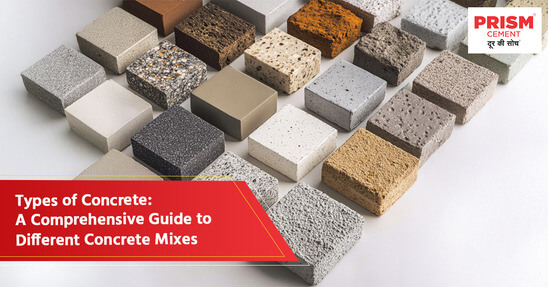Introduction to Concrete: What is it and Why is it important?
Concrete is one of the most widely used construction materials globally. It's a composite material composed primarily of cement, aggregates (sand and gravel), water and often, admixtures. The versatility of concrete allows it to be used in a wide range of applications, from residential buildings to massive infrastructure projects.
Understanding the Composition of Concrete
Before diving into the various types of concrete, let's understand the basic components:
- Cement: The binding agent that reacts with water to form a hard and durable material.
- Aggregates: These are coarse and fine materials, such as gravel and sand, that provide strength and bulk to the concrete.
- Water: Essential for the hydration process, addition of water causes a chemical reaction that binds the cement and aggregates.
- Admixtures: These are substances added to concrete to modify its properties, such as setting time, workability, strength and durability.
The 10 Essential Types of Concrete
- Normal Strength Concrete
- What is it? The most common type of concrete, used for general construction purposes.
- Applications: Foundations, slabs, walls and columns in residential and commercial buildings.
- High-Strength Concrete
- What is it? Concrete with a higher compressive strength than normal strength concrete.
- Applications: Bridges, dams and other structures requiring exceptional strength
- Lightweight Concrete
- What is it? Concrete that is lighter than normal concrete, achieved by using lightweight aggregates.
- Applications: Roof slabs, wall panels and precast components
- Coloured Concrete
- What is it? Concrete that is pigmented to achieve specific colours and shades.
- Applications: Decorative flooring, paving and architectural elements
- Stamped Concrete
- What is it? Concrete that is imprinted with patterns and textures to mimic natural materials like stone, brick or wood.
- Applications: Driveways, patios and walkways
- Exposed Aggregate Concrete
- What is it? Concrete where the aggregate is exposed on the surface, creating a decorative and textured finish.
- Applications: Flooring, walls and countertops
- Pervious or Porous Concrete
- What is it? Concrete that allows water to pass through it, reducing runoff and improving drainage.
- Applications: Driveways, parking lots and sidewalks
- Fibre-Reinforced Concrete
- What is it? Concrete that is reinforced with fibres to improve its strength, toughness and durability.
- Applications: Industrial floors, bridge decks and marine structures
- Self-Consolidating Concrete (SCC)
- What is it? Concrete that flows easily into formwork without vibration, reducing labour and improving the quality of the final product.
- Applications: Complex structures, such as columns and beams
- Decorative Overlays and Polished Concrete
- What is it? Concrete surfaces that are polished to a high sheen or overlaid with decorative materials like micro-topping or stained concrete.
- Applications: Floors, countertops and walls
Uses and Applications for Each Type of Concrete
Now that we’ve explored the different types of concrete, let’s dive into the specific applications of each. These applications depend on factors such as strength requirements, durability, aesthetics, and cost.
- Normal Strength Concrete: This is the most versatile type of concrete; used in a wide range of residential and commercial construction projects
- High-Strength Concrete: Ideal for high-stress environments, such as bridges, dams and offshore structures; Ready-mix concrete can be customised to achieve high-strength properties.
- Lightweight Concrete: Used to reduce the weight of structures, especially in seismic zones
- Coloured Concrete: Adds aesthetic appeal to both residential and commercial spaces
- Stamped Concrete: Provides a durable and decorative surface for outdoor areas
- Exposed Aggregate Concrete: Offers a unique and natural look for interior and exterior surfaces
- Pervious Concrete: Helps manage storm water runoff and improve air quality
- Fibre-Reinforced Concrete: Enhances the strength and durability of concrete structures
- Self-Consolidating Concrete: Improves the efficiency and quality of concrete construction; Ready-mix concrete is often considered a convenient way to deliver SCC to a construction site.
- Decorative Overlays and Polished Concrete: Creates stunning and long-lasting finishes for floors and walls
By understanding the different types of concrete and their specific applications, construction professionals can make informed decisions to select the most suitable concrete mix for each project.
When it comes to deciding which cement is best for concrete, we recommend Prism Cement, as it offers a range of high-performance cement products to suit various construction needs. Known for its rapid strength gain, Prism Champion All Weather cement is ideal for construction projects of all kinds. It also offers excellent workability and water resistance.

![]() Tel: +91-40-23400218
Tel: +91-40-23400218 ![]() Fax: + 91-40-23402249
Fax: + 91-40-23402249
![]() Tel: +91-40-23400218
Tel: +91-40-23400218![]() Fax: + 91-40-23402249
Fax: + 91-40-23402249